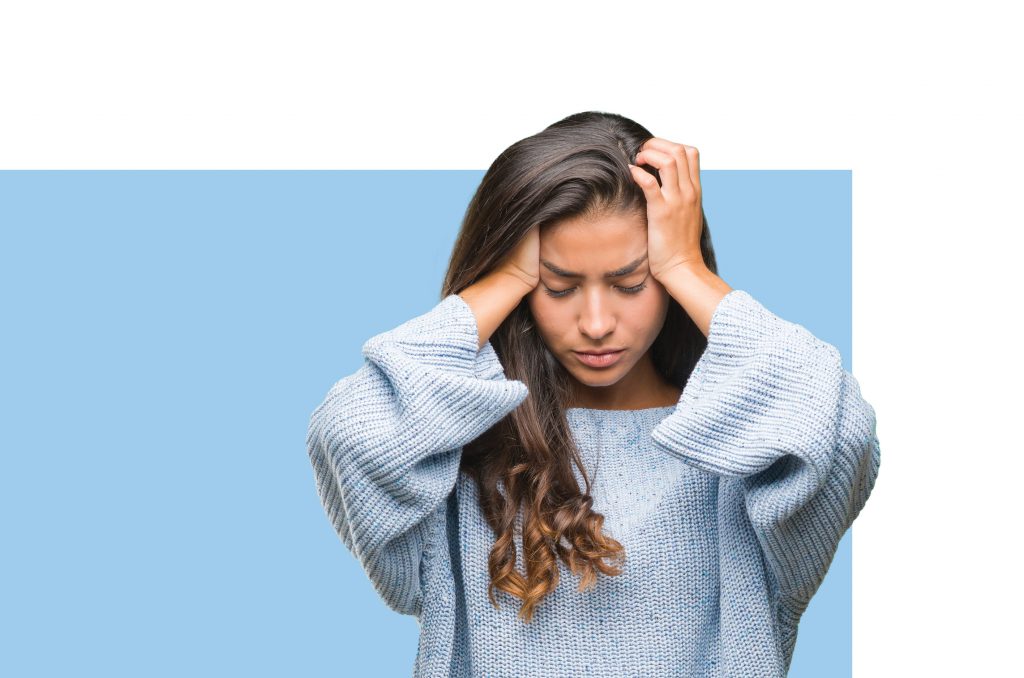People who experience migraine know the condition involves much more than just a bad headache. It can cause nausea, vomiting, light and sound sensitivity, dizziness, sleepiness, and other debilitating symptoms that get in the way of normal work and play, and it may appear spontaneously, occasionally or frequently. Some people also experience sensory disturbances called aura that include light flashes, blind spots, ‘zigzag’ lines and other vision disruptions, or tingling in the face or hands.
Family nurse practitioner Sarah Keenan of the SLUCare Headache Clinic says migraine pain usually is felt on one side of the head and generally is described as a throbbing or pounding sensation. She notes that the causes of migraines are very individualized, but the most common triggers are:
- Stress
- Dehydration
- Skipping meals
- Fluctuations in barometric pressure
- Hormonal changes in women
- Sulfites in red wine
- Beer
- Aged cheeses
- Highly processed foods
- Smoke or fumes
- Strong scents from perfume or candles
According to Keenan, migraine symptoms are generally the same in children and adults, but kids sometimes report pain on both sides of the head. “Treatment for both groups is very similar,” she says. “We start by trying to identify triggers, then we talk about lifestyle modifications that may help. Some drugs are not considered safe for use in kids, but many other options are.”
Migraine medications that have been in use for years include nonsteroidal anti-inflammatory drugs (NSAIDs) and triptans like zolmitriptan (Zomig) and sumatriptan (Imitrex). Some dietary supplements may be helpful as well, and anti-nausea medications may be prescribed to reduce vomiting.
Keenan says the latest migraine research centers on calcitonin gene-related peptide (CGRP), a protein found in the brain cavity that is a key factor in migraines with or without aura. When CGRP is released around the brain, it causes inflammation in the meninges or membranes covering the brain, and that leads to pain.
“New preventive medications target CGRP to keep the migraine from happening,” Keenan says. “The drugs have become a game-changer in this area of care.” The group of relatively new medications includes brand names like Aimovig, Ajovy and Emgality. They generally are well tolerated and don’t cause major side effects except for some injection site pain.
Keenan says rebound headaches are an added concern for many migraine sufferers. They occur in the days following a migraine and can be equally as painful as the original headache. The patient may recover from the main episode, then wake up with recurring pain over the next few days.
“Rebound headaches are a real thing, and they are not fun,” Keenan notes. “You may get them after taking medications such as ibuprofen (Motrin) or naproxen (Aleve) too many days in a row, or too many days per month. You essentially become dependent on the medication and then get the rebound headache when you do not take it.”
People experiencing migraine symptoms should always consult a health care professional for advice on prevention and treatment. With lifestyle changes like exercise, regular meals, good hydration, trigger avoidance and stress reduction, they often can find relief and return to a better quality of life.
tips for migraine sufferers
- Consume 64 ounces of water each day
- Keep caffeine to a minimum
- Try to manage stress as much as possible
- Exercise consistently
- Eat regular, healthful meals
- Keep a journal of foods, beverages and other triggers that cause problems
- During a migraine, reduce stimuli like noise and light
- See a health care professional for treatment options and advice on prevention
- Set up a support network of friends or family members who will help with daily tasks, provide encouragement and understand your needs during an episode
- Visit americanmigrainefoundation.org for resources and information
